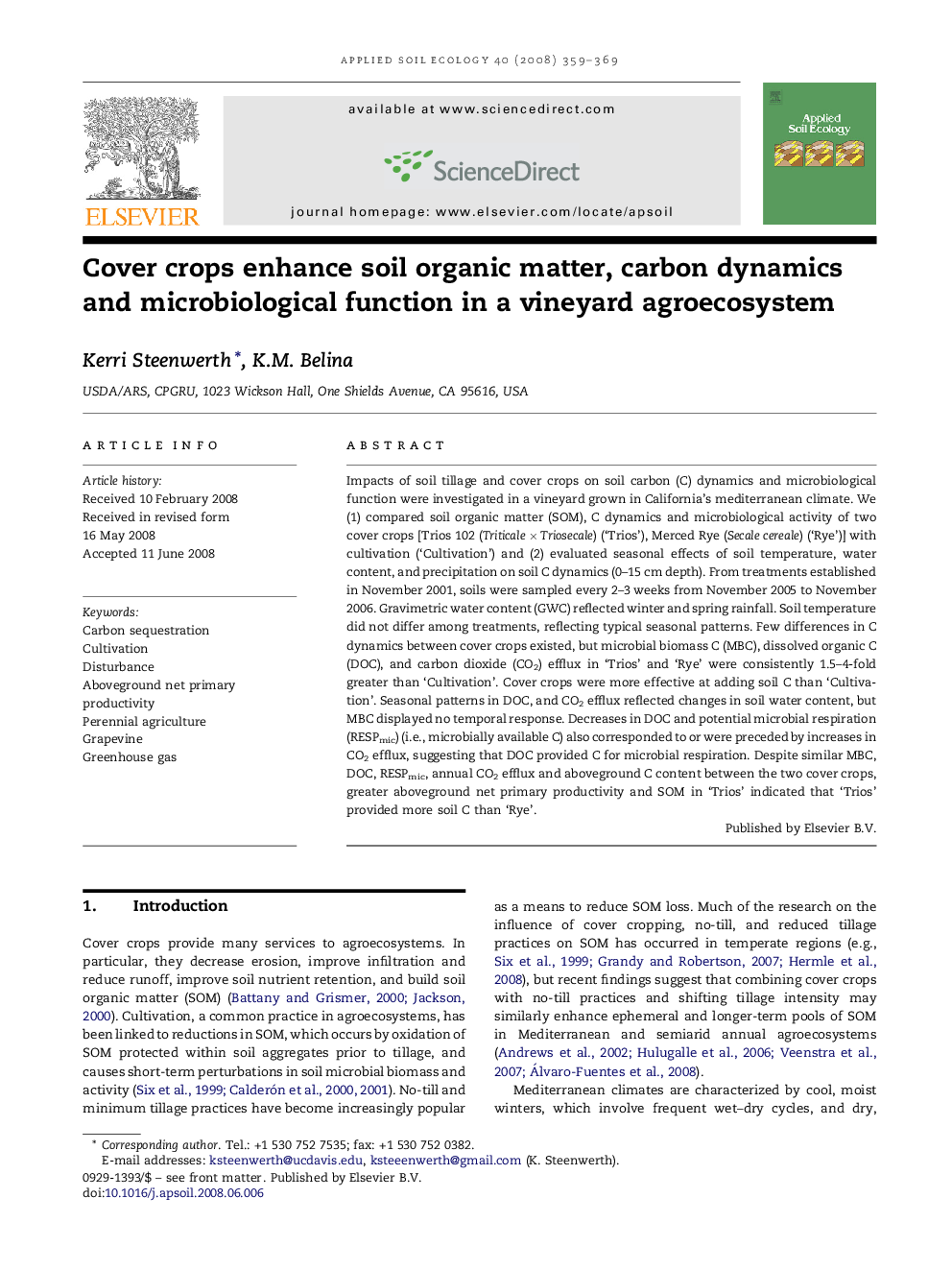| Article ID | Journal | Published Year | Pages | File Type |
|---|---|---|---|---|
| 4383141 | Applied Soil Ecology | 2008 | 11 Pages |
Impacts of soil tillage and cover crops on soil carbon (C) dynamics and microbiological function were investigated in a vineyard grown in California's mediterranean climate. We (1) compared soil organic matter (SOM), C dynamics and microbiological activity of two cover crops [Trios 102 (Triticale × Triosecale) (‘Trios’), Merced Rye (Secale cereale) (‘Rye’)] with cultivation (‘Cultivation’) and (2) evaluated seasonal effects of soil temperature, water content, and precipitation on soil C dynamics (0–15 cm depth). From treatments established in November 2001, soils were sampled every 2–3 weeks from November 2005 to November 2006. Gravimetric water content (GWC) reflected winter and spring rainfall. Soil temperature did not differ among treatments, reflecting typical seasonal patterns. Few differences in C dynamics between cover crops existed, but microbial biomass C (MBC), dissolved organic C (DOC), and carbon dioxide (CO2) efflux in ‘Trios’ and ‘Rye’ were consistently 1.5–4-fold greater than ‘Cultivation’. Cover crops were more effective at adding soil C than ‘Cultivation’. Seasonal patterns in DOC, and CO2 efflux reflected changes in soil water content, but MBC displayed no temporal response. Decreases in DOC and potential microbial respiration (RESPmic) (i.e., microbially available C) also corresponded to or were preceded by increases in CO2 efflux, suggesting that DOC provided C for microbial respiration. Despite similar MBC, DOC, RESPmic, annual CO2 efflux and aboveground C content between the two cover crops, greater aboveground net primary productivity and SOM in ‘Trios’ indicated that ‘Trios’ provided more soil C than ‘Rye’.
